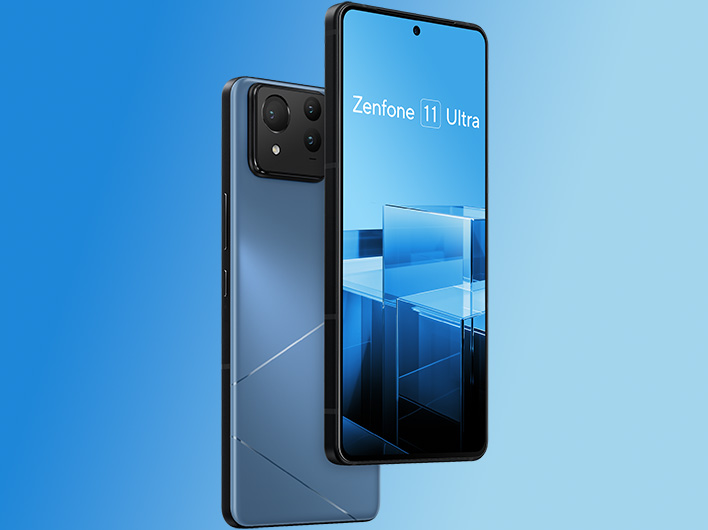ASUS Unveils Zenfone 11 Ultra With A Giant OLED Display And Snapdragon Inside
Last year's Zenfone 10 had a 5.92-inch screen, and any phone under 6 inches is tiny by today's standards. ASUS was really the only OEM making small, high-end Android phones. There were rumors last year that ASUS would end the Zenfone line, a claim that ASUS refuted. However, it may be that someone in the leak chain misinterpreted the company's plans. The Zenfone isn't dead, but it's no longer a distinct product.
While the Zenfone 11 Ultra has grown in size, it also comes with more impressive specs. Inside is a Snapdragon 8 Gen 3 processor, 12GB of RAM, and 256GB of storage. The 6.78-inch OLED is 1080p with a 120Hz refresh rate, and it has the option of boosting to 144Hz in supported games. There's a 5500mAh battery that ASUS claims can run 26 hours on a charge—we would anticipate real-world longevity to be similar to the ROG Phone 8 Pro, which has the same specs and came out near the top of our battery life test.
On the imaging side, there's a 50MP primary, a 32MP 3x telephoto, and a 13 MP ultrawide lens. The primary camera has the same 6-axis gimbal stabilization technology as the ROG phone 8, and there's standard OIS on the telephoto sensor. Around front, there's a 32MP selfie camera peeking through a hole punch in the edge-to-edge OLED.

Unlike the ROG Phone 8, there's no side-mounted USB-C port for charging and accessories. The trademark shoulder buttons are also absent, which makes sense for a phone that is not aimed specifically at gamers. The illuminated logo and dot matrix lights from the ROG Phone are also absent. However, the new Zenfone does keep the headphone jack, which we see so rarely these days.
This all pushes the price down slightly compared to the ROG Phone 8, but it's still more expensive than last year's Zenfone. ASUS is asking $899 in the US, which is higher than the Zenfone 10's $699 price tag. Still, you get almost all the same features as the flagship-level ROG Phone 8 for $100 less. ASUS will ship the Zenfone 11 Ultra in April, In the US, it will work on T-Mobile and AT&T networks.


